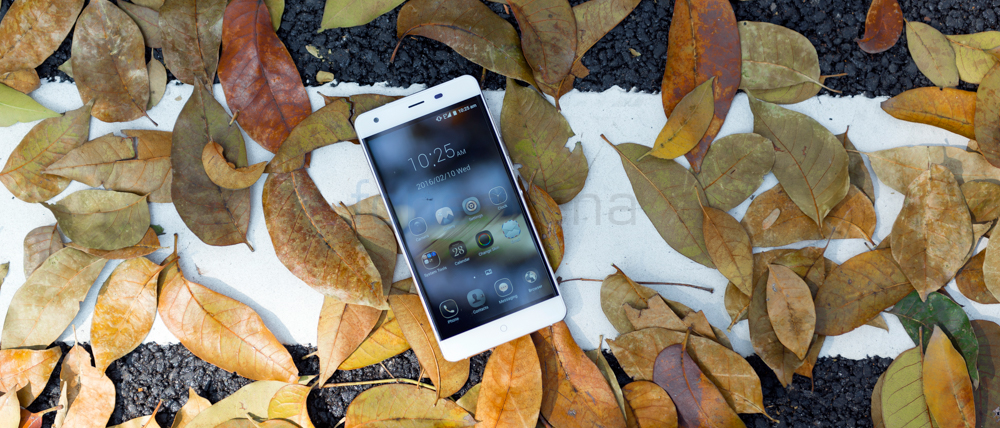
Battery life in smartphones has been one of the most ignored aspects in recent years. Sure, there has been several improvements in battery technology with faster charging, wireless charging etc. but the battery life has taken a drastic hit due to the phones becoming more power-hungry. With more and more powerful processors and bigger screens, phones require larger batteries to power them. Sure, optimization will help but only to a certain extent and Ulefone is a brand that seems to understand that. The Ulefone Power as its name implies is a smartphone with a massive internal battery. It packs a 6050 mAH battery into an affordable mid-ranger handset. It even offers DualSIM 4G LTE as well as a fingerprint sensor. Let’s dive into the review to see whether the phone does manage to impress us with its battery life and other features.
Design, Materials and Build Quality
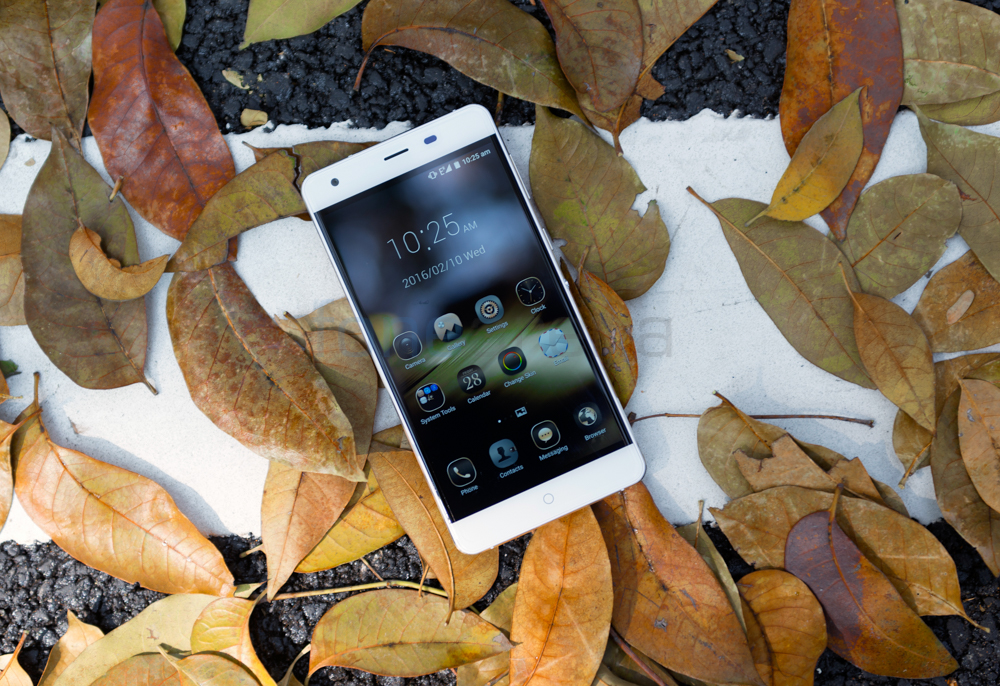
The first thing that strikes you when you hold the Ulefone Power in your hand is the weight of the smartphone. It is quite heavy at 190 grams but that also gives it a premium feeling. The reason for this weight is the huge 6050 mAH battery under the hood. For the same reason, the thickness of the handset too is a bit more than most smartphones at 9.5mm but we have to give credit to Ulefone for still keeping it under 10mm. The overall footprint is around the same size of the Galaxy Note5 but slightly larger. That is because of the large bezels and as a result, the smartphone is on the larger side for a 5.5-inch smartphone. But it still is smaller than an iPhone 6 Plus/6s Plus in terms of footprint and that is a big thing for a mid-ranger phablet.
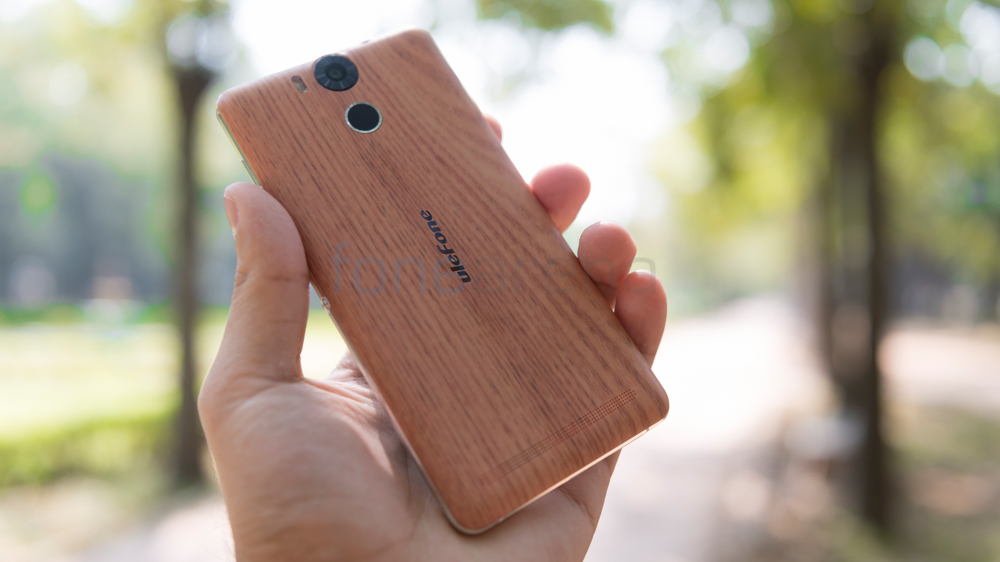
The build quality is solid thanks to the use of metal and glass. Our unit has a wooden back which feels good to hold but does feel out-of-place. It doesn’t blend in well with the rest of the phone compared to phones such as the OnePlus One or OnePlus 2. It feels like an aftermarket mod rather than an official variant. We would rather have the regular dark blue or white variants.
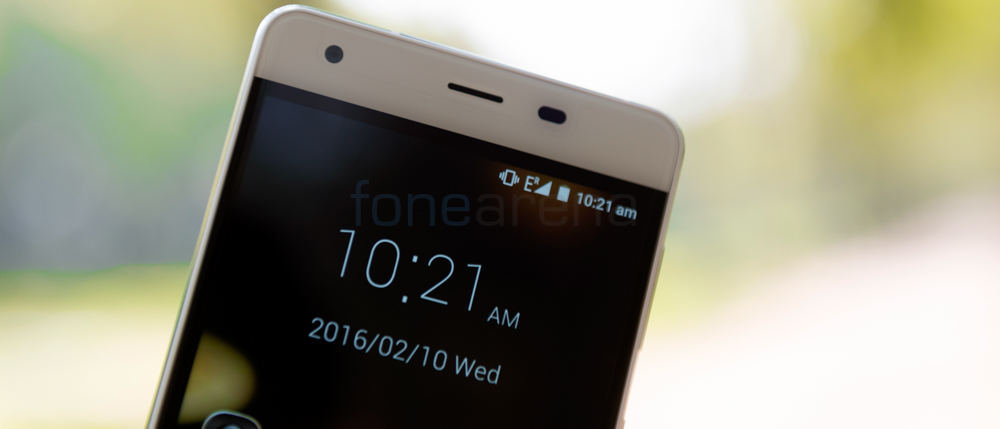
The front is dominated by the 5.5″ display above which you have the earpiece, front facing camera as well as proximity and ambient light sensors. Below the display, you have 3 capacitive buttons which are backlit.
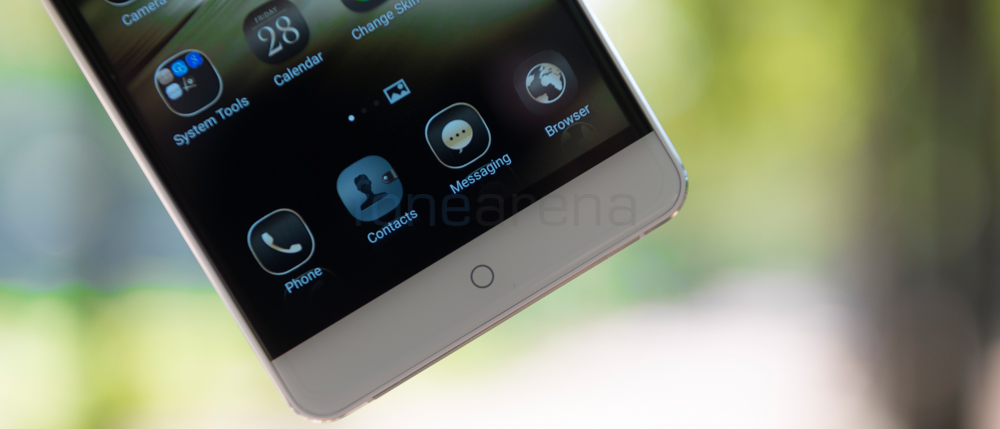

At the right side, you have the volume rocker button, power key and the camera shutter button while the left side houses the Hybrid SIM slot. The phone can take either 2 microSIMs or a microSIM and a microSD card.
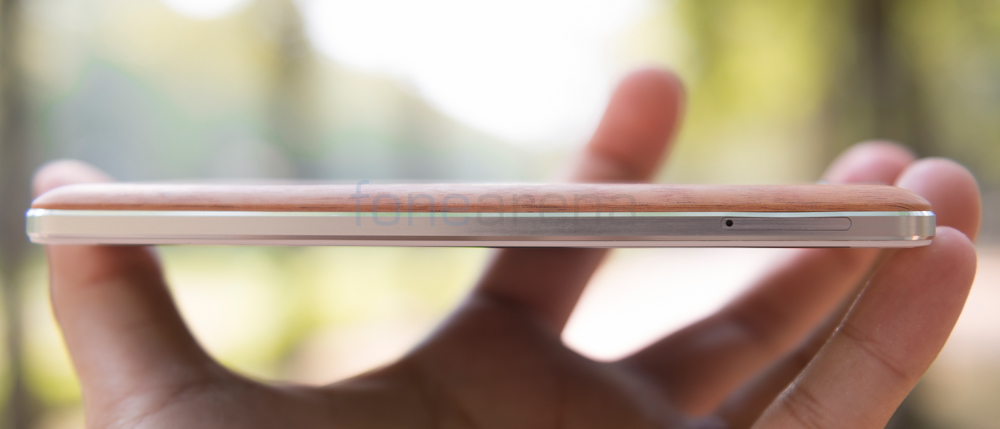
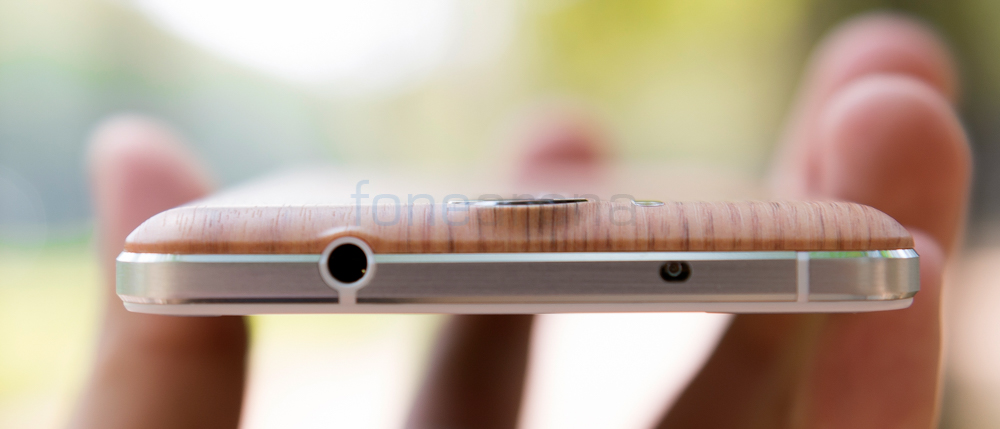
At the top, you have the 3.5mm audio jack and IR blaster. You will find the microUSB port, primary microphone and antenna cutouts at the bottom.
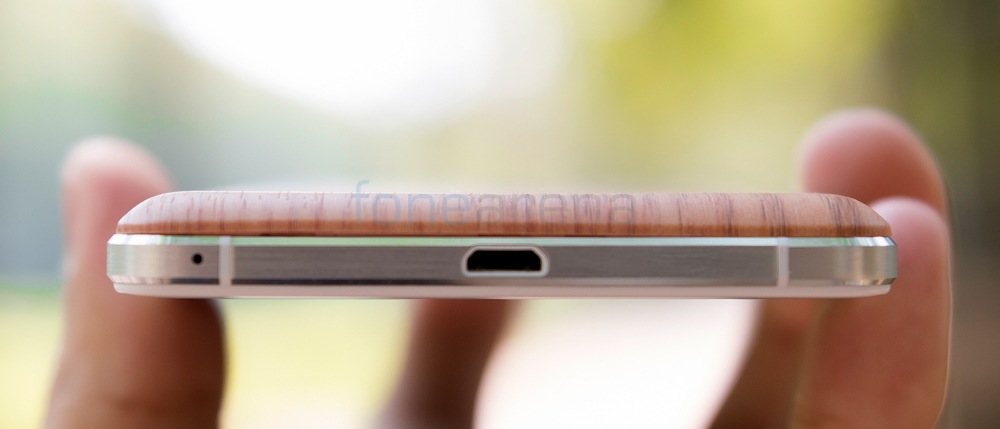
At the back, you have primary camera, dual-LED flash and the fingerprint sensor. You also have the loudspeaker grill at the bottom. The back panel is removable but the 6050 mAH battery is sealed and is non-user replaceable.

Display
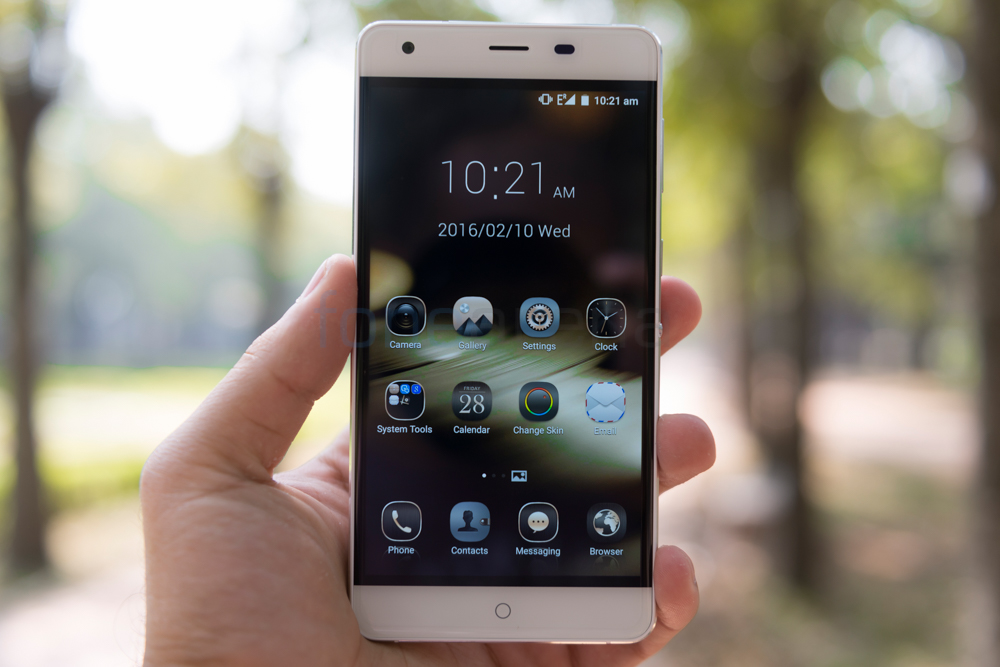
The 5.5″ 1080p display has 2.5D Gorilla Glass 3 for protection. The Gorilla Glass 3 does a good job at protecting the screen from scratches and the 2.5D curved glass feels good to use. The company includes a pre-fitted screen protector on the smartphone out of the box which is a good touch but would’ve preferred if they hadn’t pre-installed it. The display has black borders on all four corners that gives you the illusion that it is borderless however in reality, the bezels are quite big and you come to know once you switch on the display.
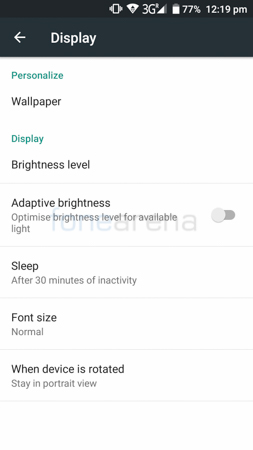
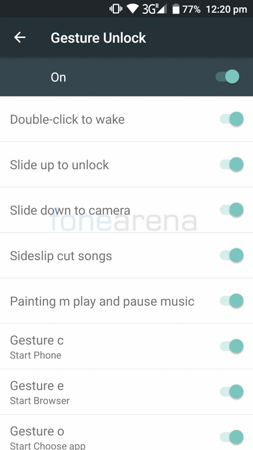
The viewing angles are quite good and so are the colours. The display is a bit reflective but the brightness is good enough to compensate for it and as a result the sunlight legibility is quite good too. The phone also supports adaptive brightness but lacks options to adjust the colour tone or saturation. The phone can be unlocked using the power button or also double tap if you have the option enabled. The three capacitive keys below the display have backlighting is very dim and unless you’re in a dark environment, you don’t really see the difference. There is a tiny notification LED next to the ambient light and proximity sensors that can glow in red, blue or green and the user can customize the colour settings as well.
Fingerprint Sensor
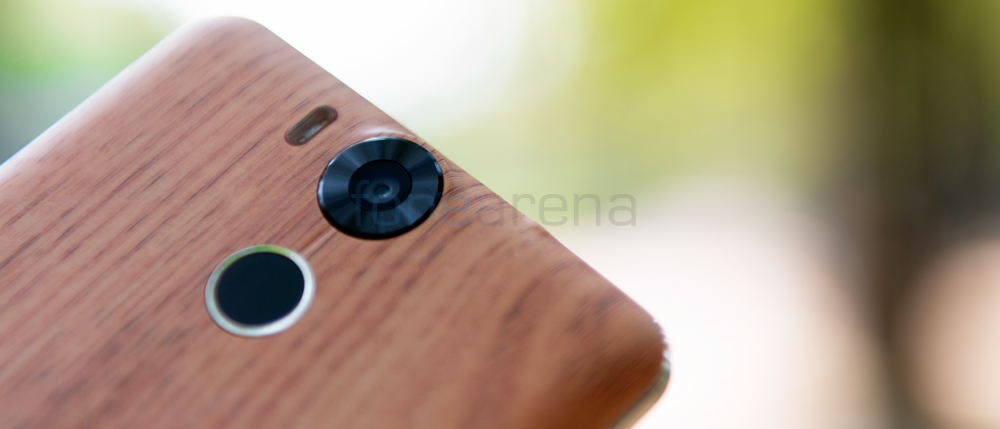
The fingerprint sensor is located at the back just below the camera module. The placement of the sensor is ideal as it is located at the position where your index fingers normally rest when holding the phone. The fingerprint sensor doesn’t require you to wake the phone up in order to unlock it and you can wake the phone up and unlock it directly by just placing a registered finger on the sensor. You can also press the power button or double tap to wake and then authenticate your fingerprint. Additionally, users have to enter a PIN which can be used to unlock the phone if the fingerprint doesn’t get detected normally. The fingerprint sensor is quite quick to detect and is also quite accurate but isn’t the best in the industry. Still, it is more than we could hope for at this price point.
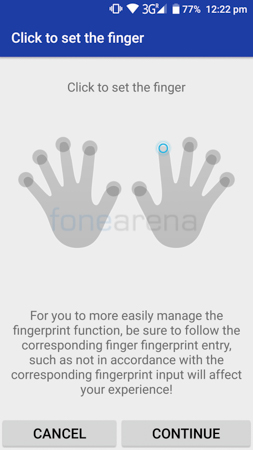
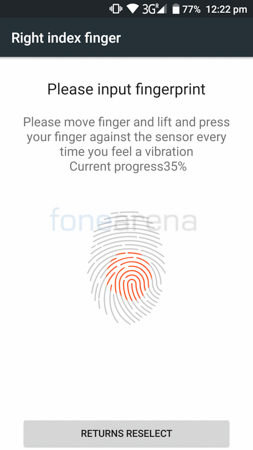
While the hardware part of the fingerprint sensor is nothing out of the ordinary, the various software tweaks available are certainly attention grabbing. The phone allows you to choose the finger you want to register and then asks you to place your finger on the pad then lift and repeat when it vibrates. Your fingerprint can be used not just to unlock your phone but also to launch applications and each finger can be assigned a particular application. So, by just placing your finger on the sensor, the phone will automatically unlock the phone and open the application. You can even take it a step further and use your fingerprint to take a photo after launching the camera application.
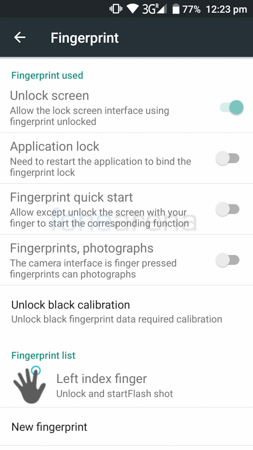
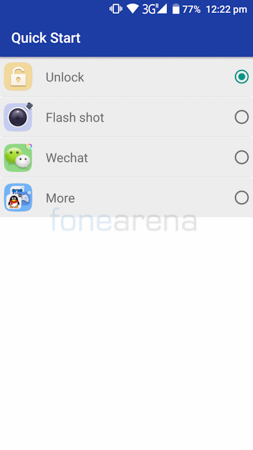
Users can also specify which camera to be launched by default. So for example, your left index finger could be used to unlock the phone and launch the main camera while the right index finger can be used to unlock the phone and launch the front facing camera. You can even set your thumb to unlock the phone and turn on the torch. The fingerprint sensor can be used as a camera shutter button even if you don’t have an auto launch option enabled. Any of the registered fingerprints will trigger the autofocus and then take the picture immediately after focusing.
Software and UI
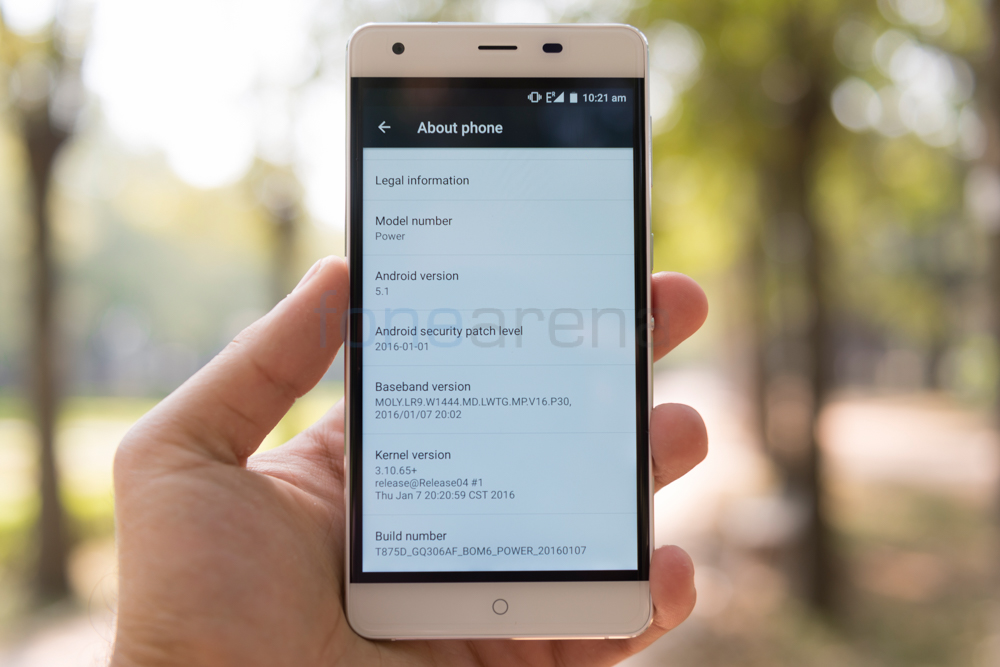
The phone comes with Android 5.1 out of the box and has January 2016 security patch version at the time of writing this review. Ulefone say that the phone will get the update to Android 6.0 Marshmallow but haven’t specified when exactly the update will be coming. The entire UI is quite similar to a stock Android experience but Ulefone has bundled several features along with it. There is no app drawer and you will have to install a 3rd party launcher if you want one. Several gestures are supported including double tap to wake, slide up to unlock, slide down to camera etc. There are even gestures that can be customized to start apps that you desire.
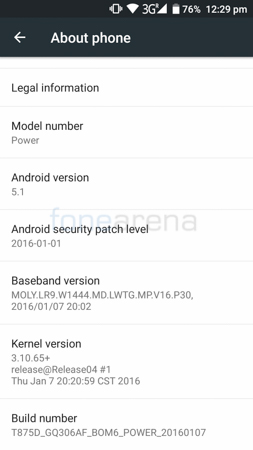
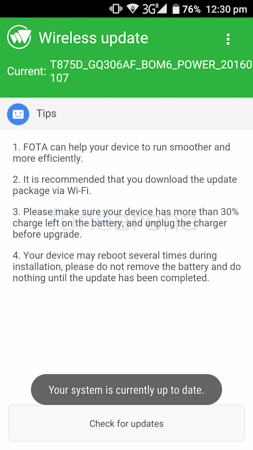
There is an option called “Smart somatosensory” which basically is a motion based method of navigating UI and between apps. You can use your hands in front of the display and the phone will track the movement using the front camera and perform corresponding actions. You can use it in the gallery, camera app, launcher as well as music player and even to unlock the phone. However, in our experience, this was more or a hit or miss kind of situation. The phone didn’t always recognize our hand movements and when it did, it mostly did so only in one direction. You can also enable automatic calling when you are viewing a message or a contact. The phone also supports scheduled power on and power off.
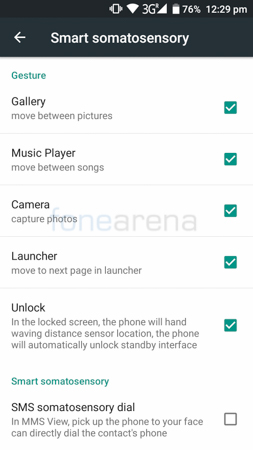
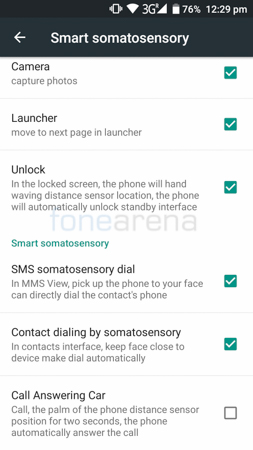
Calls and Messaging
The call quality is pretty good on the Ulefone Power. The earpiece is loud and clear and your audio also gets relayed well to the party at the other end. The speaker is decently loud but there is distortion at higher volumes. The dial-pad is large and easy to use thanks to the 5.5″ screen and there are shortcuts to quickly choose which sim you want to use to make the call as well.

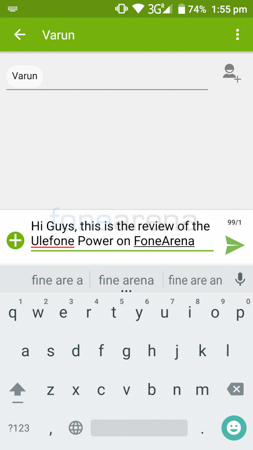
The default keyboard on the device is Google Keyboard and we are fine with that. The layout is easy to use and makes use of the large screen estate. The only downside is the lack of built-in emojis but if you want, you can use a 3rd party keyboard from the Play Store anytime.
Storage, Connectivity and Performance
The smartphone comes with 16GB of internal storage out of which around 11.67GB of free space is available to the user out of the box. The memory can further be expanded using microSD cards up to 128GB in capacity. Once inserted, you can set the microSD as the default write disk if you want and also move compatible apps to the SD card. Additionally, the phone also supports USB OTG so you can connect your HDD or USB drive when needed.
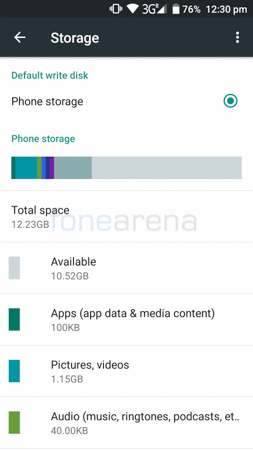
The phone supports 4G LTE however can only be on 4G on one sim at a time while the other switches to 2G. FDD-LTE Band 3 is supported; however, the official listing doesn’t specify support for TDD-LTE Band 40. The phone takes 2 microSIMs or a microSIM and a microSD card slot. While a dedicated memory card slot would’ve been ideal, having an option to choose between a SIM or microSD itself is a good thing to have.
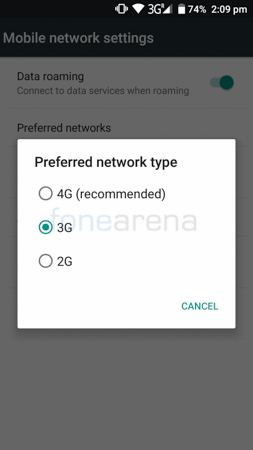
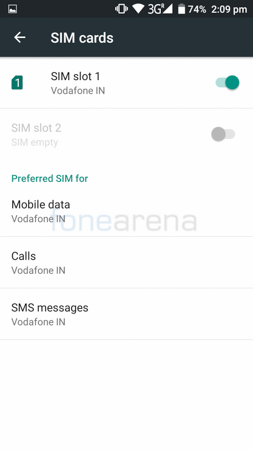
The device supports Wi-Fi 802.11 b/g/n and Bluetooth 4.0. It is powered by an octa-core Mediatek MT6753 64-bit processor with Mali T720 GPU and 3GB of RAM. The performance is quite smooth without any lag or stutters. While it isn’t something we recommend for intensive gaming, it can still playback HD movies and the occasional game or two without breaking a sweat. The good thing to note is that the smartphone does well to keep heat under control always.
Music Player and Audio Quality

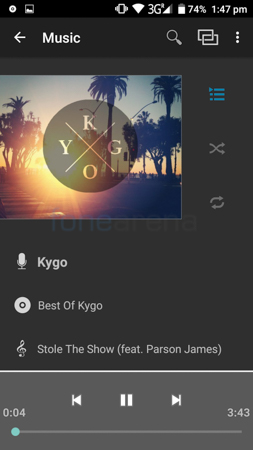
The music player on the Power is quite basic but good enough for most regular users. It gives you different ways to sort your music. The now playing screen offers the default track controls as well as a built-in equalizer. The now playing screen also shows you the album art of the song being played. The equalizer has several presents that you can choose from or else, you can make your own custom EQ. There is also a sound enhancement tool within the main settings to tweak the audio output a little bit further.
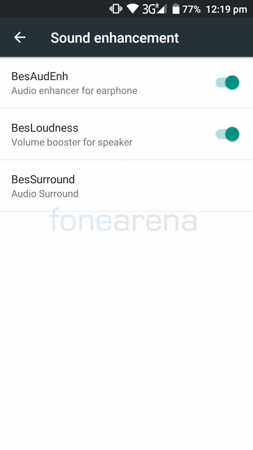
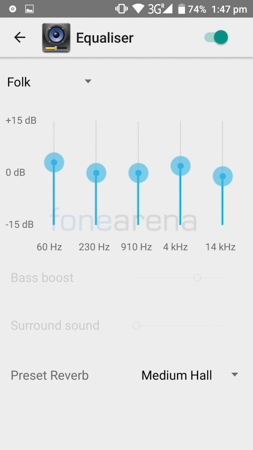
There is a built-in FM radio app that requires a pair of headphones or earphones to operate. Once, you have it connected, you can listen to the radio using the connected earpiece or the built-in speakers. Users can seek or scan and add their favourite channels to their list. It also supports recording.
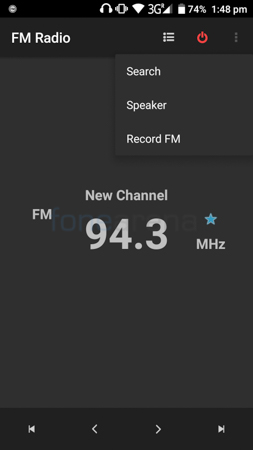

The audio quality through earphones or headphones is decent but nothing great. The main issue is that it lacks “Power”. There isn’t enough juice in the phone to get the bass notes right and the songs mostly lack depth. The volume too is a bit on the lower end but it is fine unless you are going to a really noisy environment. The speaker too suffers from pretty much the same issues. It isn’t too loud and when you put it to the maximum, the quality reduces due to crackling.
Camera
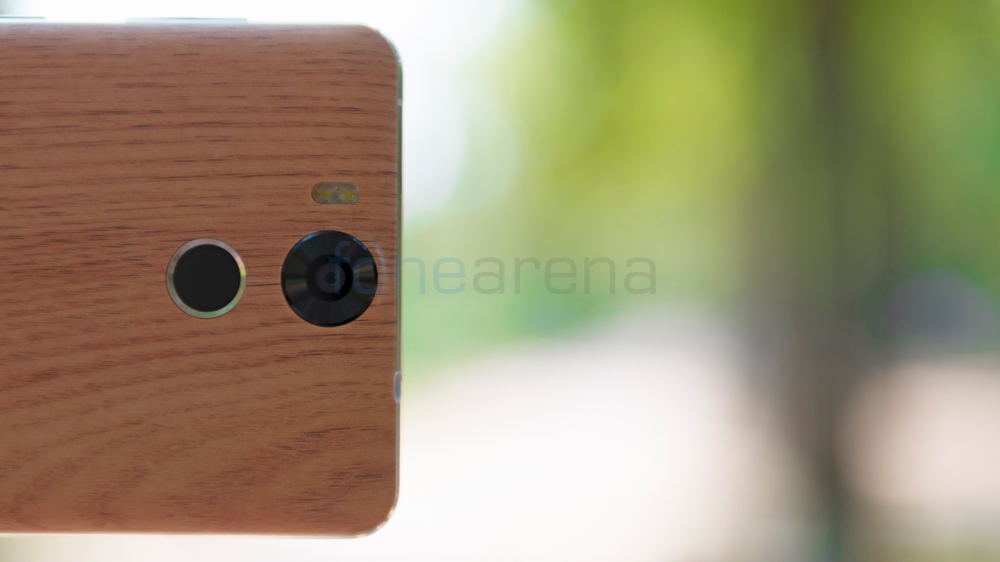
The Ulefone Power has a 13 Megapixel primary camera with Sony IMX214 sensor, f1.8 aperture and dual LED flash. The image quality is pretty good with good details and colours. The low light performance too is pretty decent thanks to the f/1.8 aperture. Noise does exist but it isn’t too bad. The Dual LED flash is powerful but not ideal especially if you want to capture people as the skin tone doesn’t show very naturally. Dynamic range is on the lower side but luckily the HDR mode fixes that to an extent. Click on any of the images below for a full resolution sample.
The image on the left is taken in normal mode while the image on the right is taken in HDR mode.
The front facing camera is quite good in terms of details however the field of view is quite narrow and as a result, it becomes difficult to take photos with many people in the frame. For singles or even couple selfies intended for social media purposes, this should be sufficient. The phone can record videos at a maximum resolution of 1080 but the quality is quite poor due to high-compression and the files are saved in the ancient .3gp format as well. We hope they make some changes to improve the video quality in a future firmware update.
Battery Life

Having a large battery capacity doesn’t mean that a phone would have great battery life. A lot depends on the processor, the screen size and resolution as well as optimisation. Luckily, in the case of the Ulefone, everything falls into place and as a result, it is the highest scoring smartphone in our battery life test. It got a one charge rating of 24 hours and 46 minutes in our battery test and it most definitely will last even the heaviest of users a full day of use on a single charge if not more. For the full-fledged results, visit this link.
Conclusion
The Ulefone Power is quite a unique phone in several ways. It offers a really great battery life, very different fingerprint scanning experience, a good display and 4G LTE capabilities. It has its drawbacks mainly in terms of speaker output and bulkiness but the latter is something that is expected with most phones having this kind of battery capacity. If you want a well performing phones with a lot of features, fingerprint scanner and a great battery life, then this is something that will really be worth the asking price of US$ 209.99 (Around Rs. 14,300). The only issue here is the availability. Ulefone hasn’t yet officially launched in India but judging by the recent surge of Chinese brands in India, we are guessing that they too would enter very soon. You can get the phone from Gearbest.
Pros
- Solid Build Quality
- Fast Fingerprint Sensor
- Hybrid SIM Slot with 4G LTE Capability
- Stellar Battery Life
- Good Display
Cons
- Poor Audio Quality
- Narrow FoV (Field of View) on Front Camera
- Bad Video Quality





